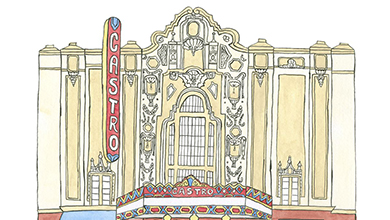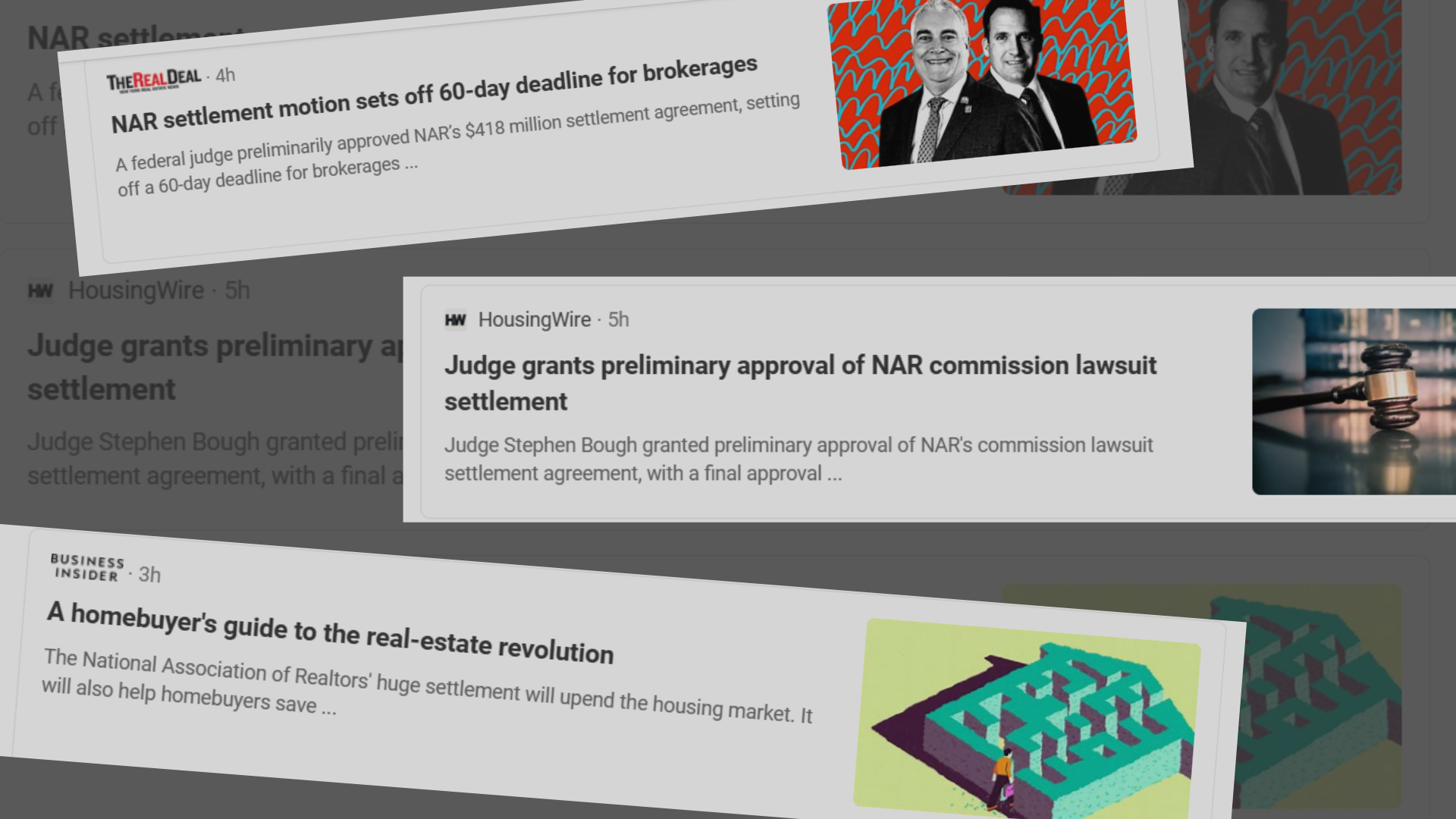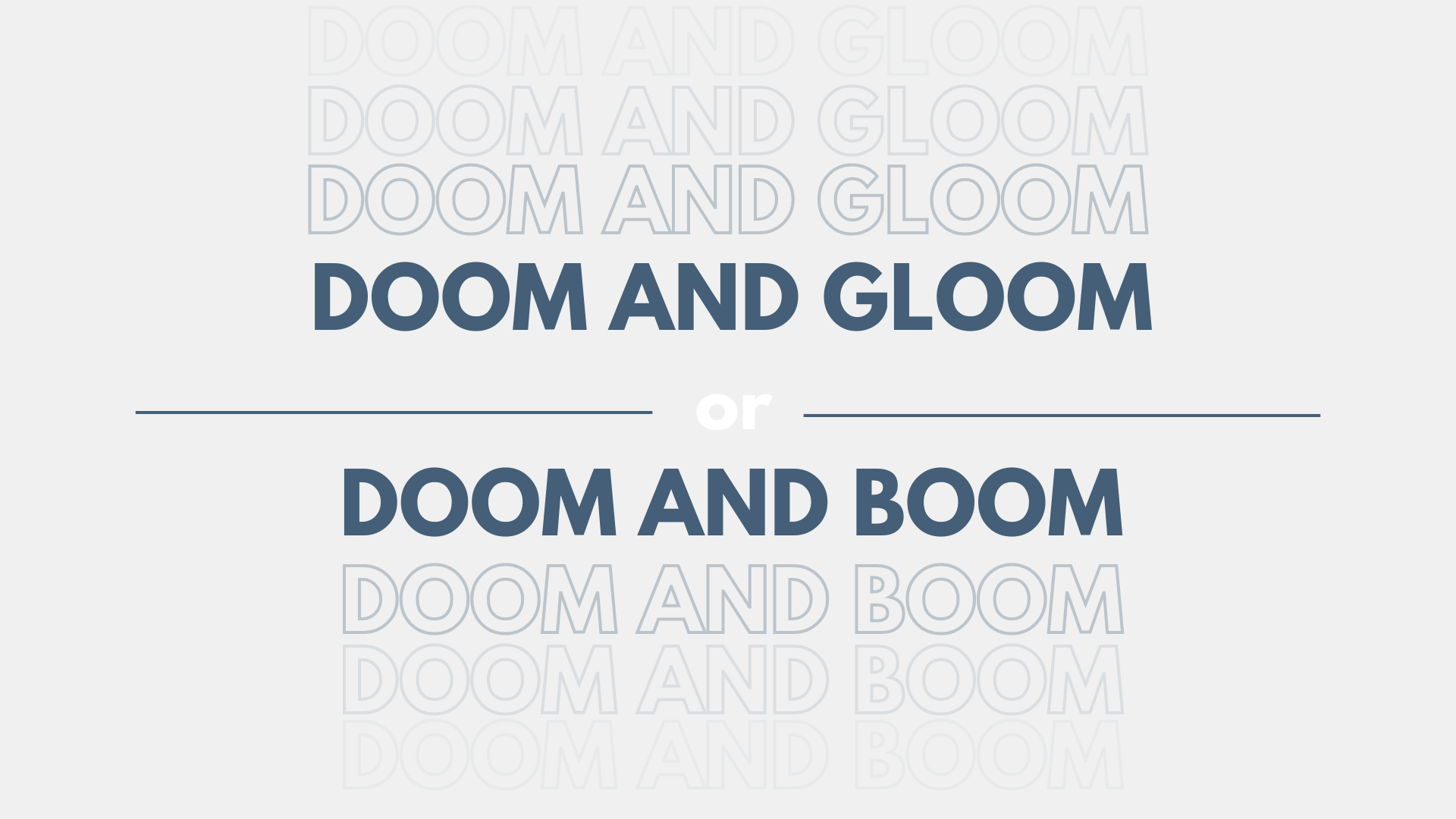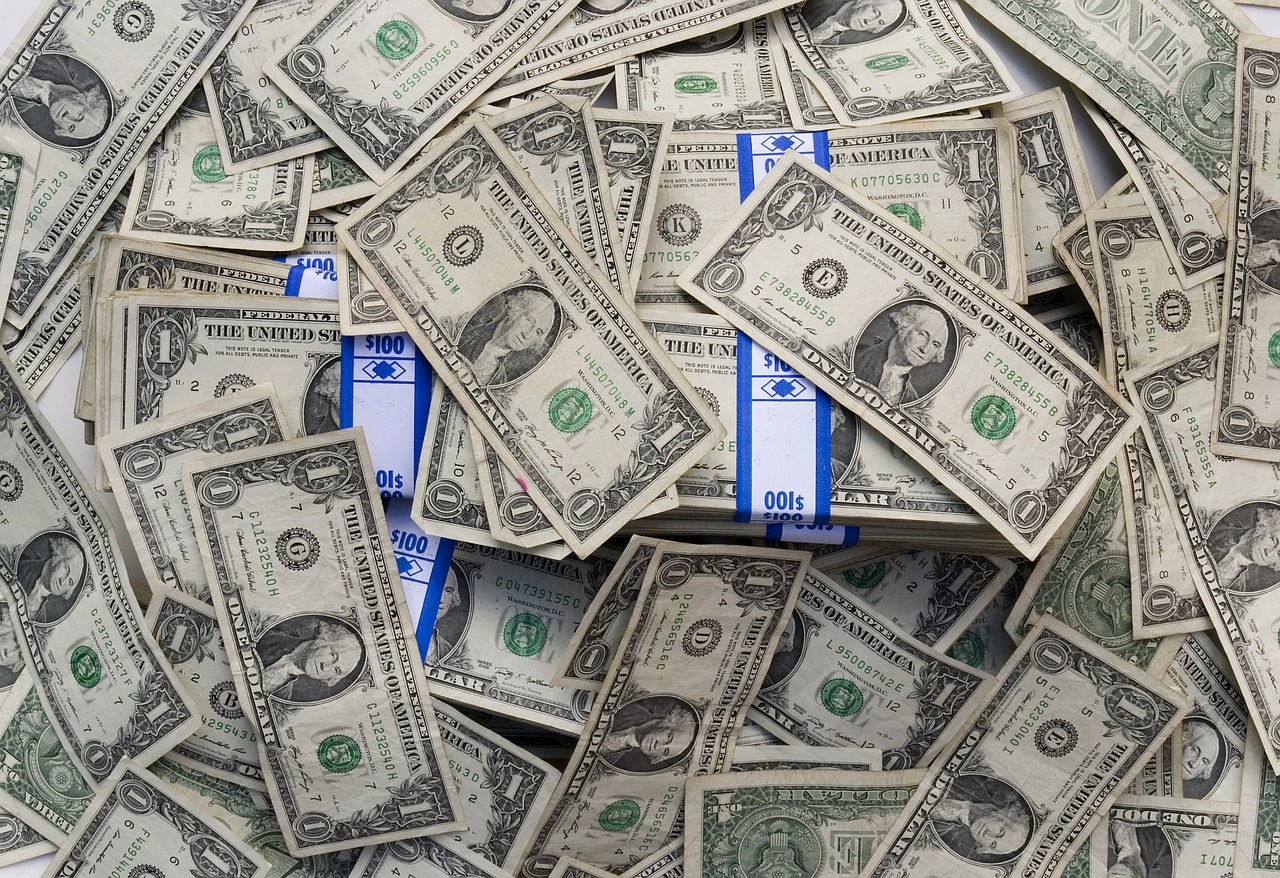The city by the bay is justly proud of its architectural heritage. Large swathes of its hilly terrain were rebuilt virtually overnight after the 1906 earthquake, firmly establishing its persona as one of Victorian homes, fire-resistant brick commercial buildings, and a classic civic center. In recent years, though, a forest of sleek skyscrapers have joined the city’s iconic Transamerica Pyramid, and curvaceous silhouette of the Snohetta’s addition to the San Francisco Museum of Modern Art (SFMOMA) have raised the city’s cred as a place for contemporary design.
Here is a sample of some of the architecture styles you’ll find in San Francisco.
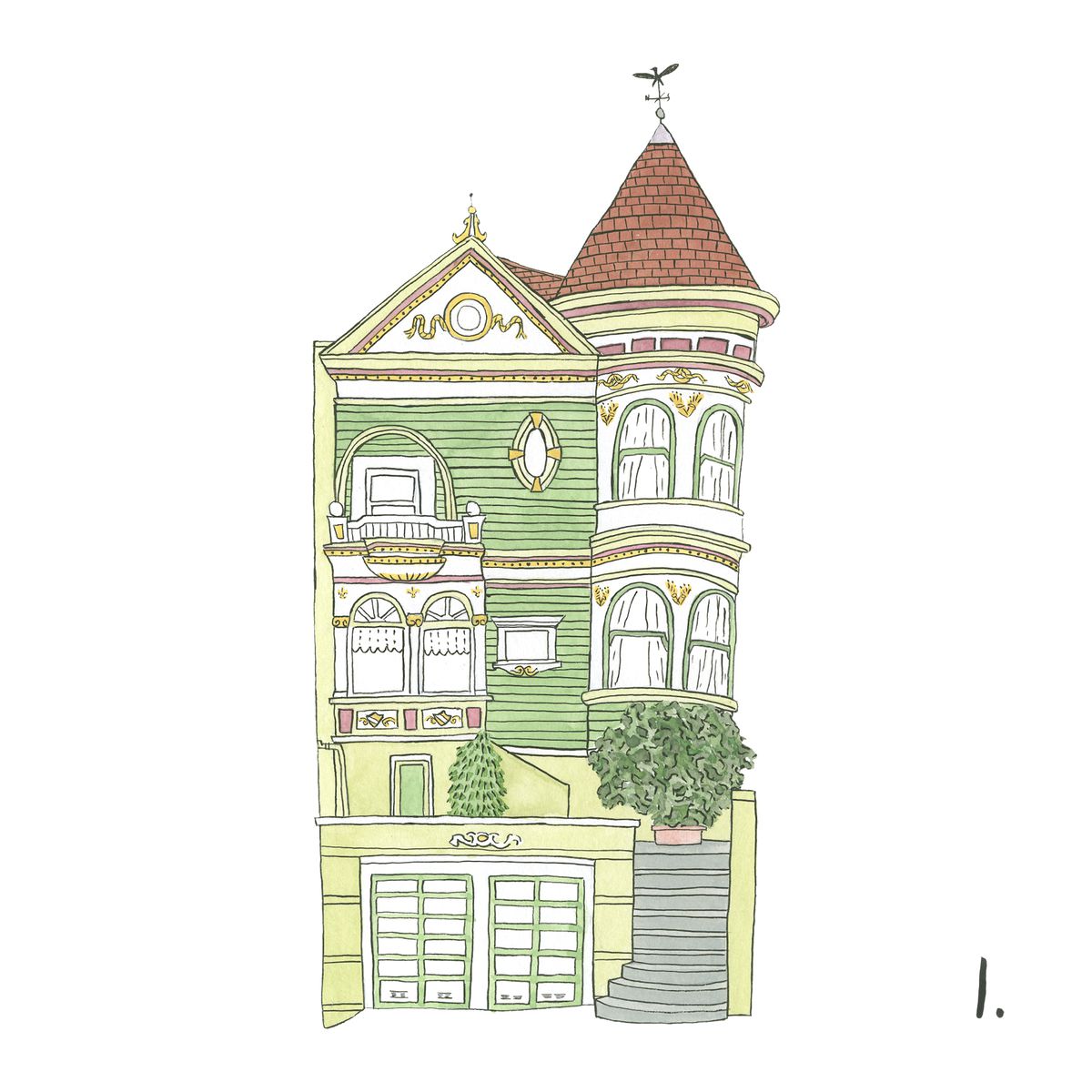
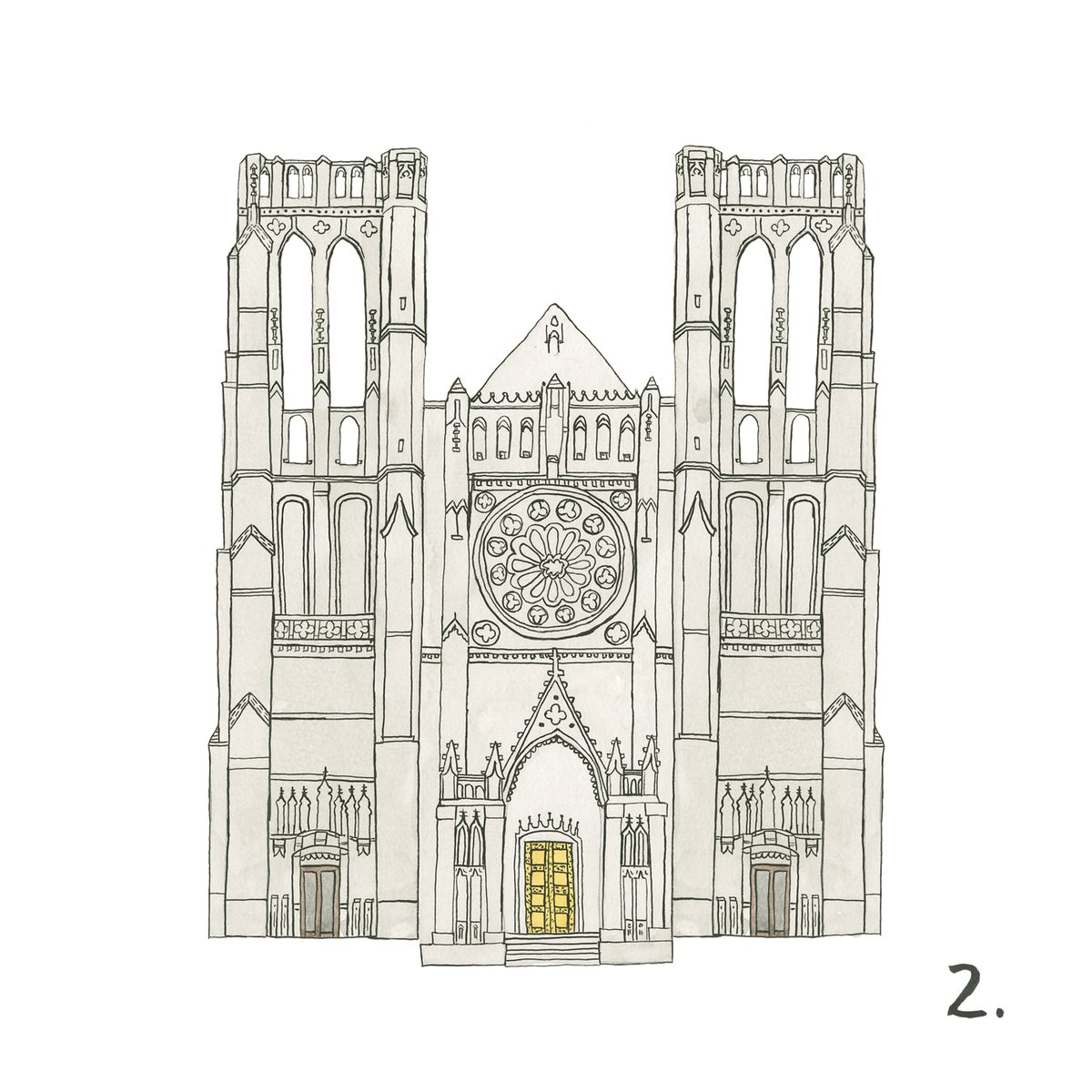
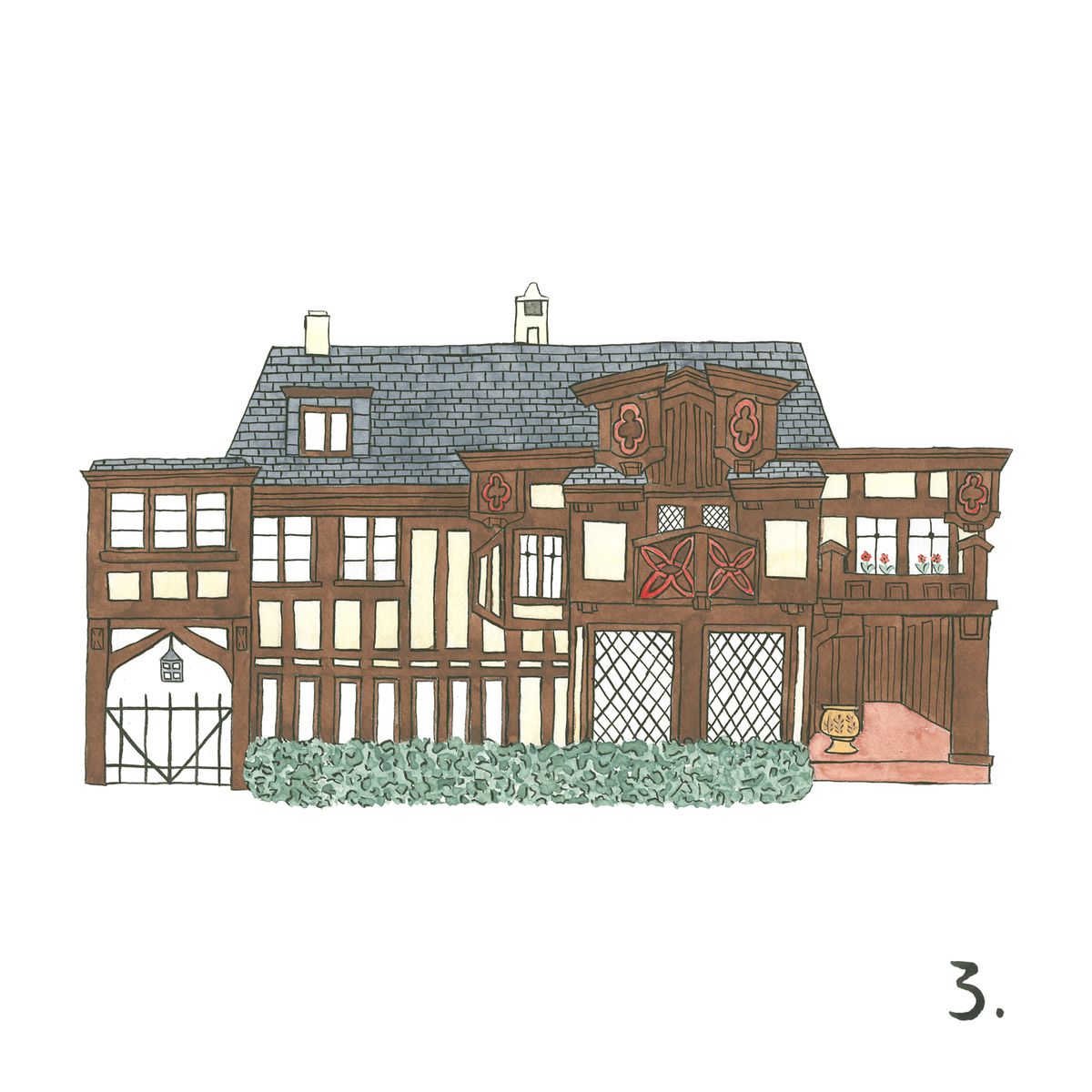

1. Queen Anne
While the Victorian is the most prevalent type of architecture in the city, which refers to the reign of Queen Victoria (1837–1901), it contains a multitude of styles. One of the most exquisite is the Queen Anne variety. The Painted Ladies, a row of Queen Anne homes in Alamo Square from the late 1800s, have long been the celebrities of San Francisco architecture. They feature flamboyant colors, elaborate gingerbread trim, bay windows, and the occasional turret. Other styles that fall under the Victorian umbrella: Gothic Revival (see below), Italianate (signature roof brackets), and Eastlake (lots of millwork) all have strong representation in San Francisco.
2. Gothic Revival
Inspired by medieval cathedrals and their ornate windows and spires, a good example of the dramatic Gothic Revival style is San Francisco’s beloved Grace Cathedral (it looks centuries-old, but the current building actually dates to 1927). Gothic Revival homes feature steeply pitched roofs and pointed arches. Architect Timothy Pfleuger’s 1925 Pacific Telephone Building(aka 140 Montgomery) combines Gothic and Art Deco elements to dazzling effect in one of San Francisco’s earliest and most beautiful skyscrapers.
3. Tudor Revival
This historical style is easy to recognize for its distinctive half-timbering; the original Tudors featured exposed wood framing with whitewashed wattle-and-daub walls. Tudor Revival was a go-to for developer Oliver Rousseau, who turned to it for a model home in the Sunset, giving it painted-on timbers and faux stone masonry. A much swankier version is in Presidio Heights by architect Bernard Maybeck and is one of the few homes he designed in San Francisco.
4. Shingle Style
A reaction to the excesses of Victorian architecture, Shingle Style is pretty self-explanatory: The homes feature plain facades covered in shingles. The style originated in New England, but Bay Area architects including Ernest Coxhead and Willis Polk took the idea and ran with it around the turn of the century. Architectural historians cite their redwood shingle–clad homes as part of the First Bay Tradition, a precursor to Northern California modernism.
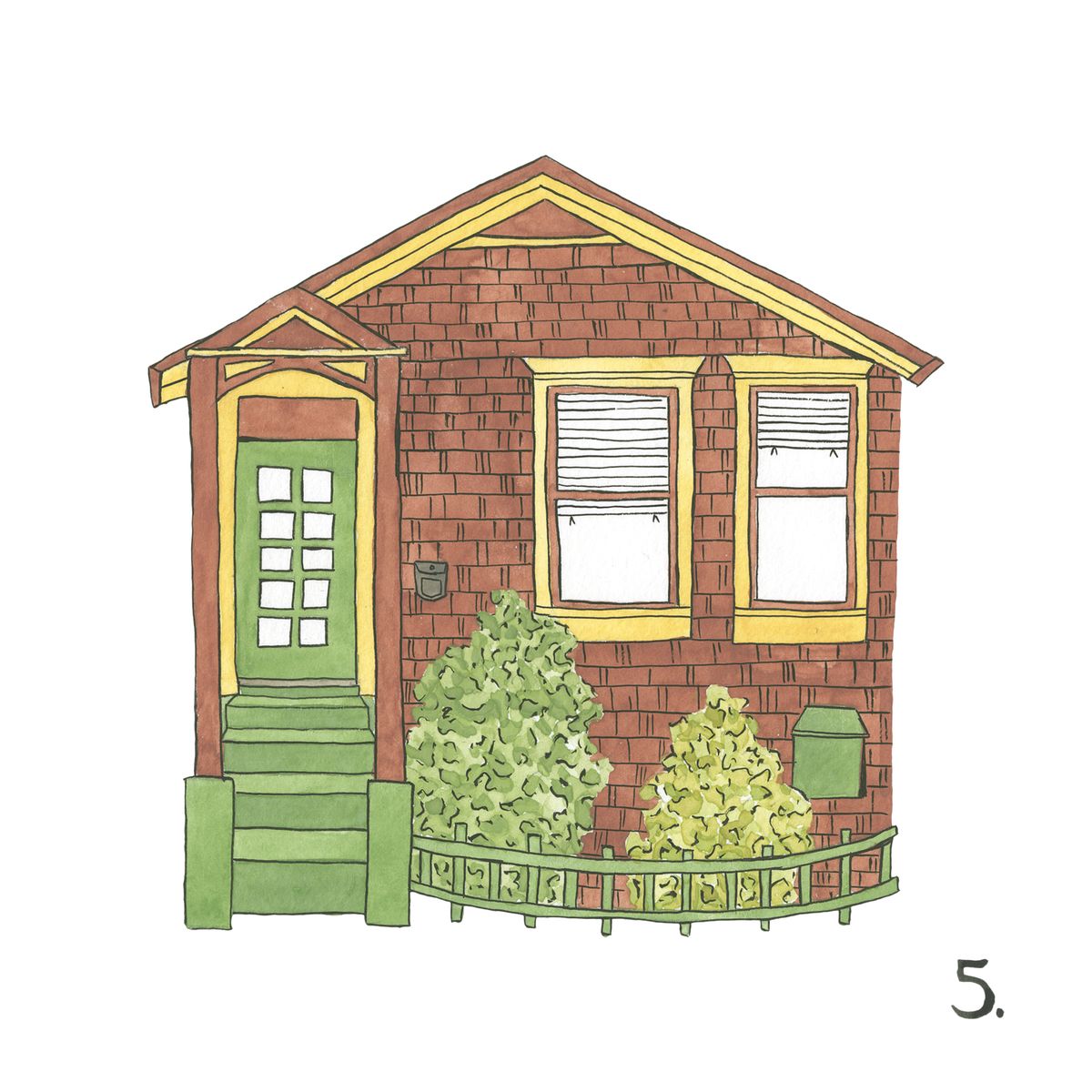
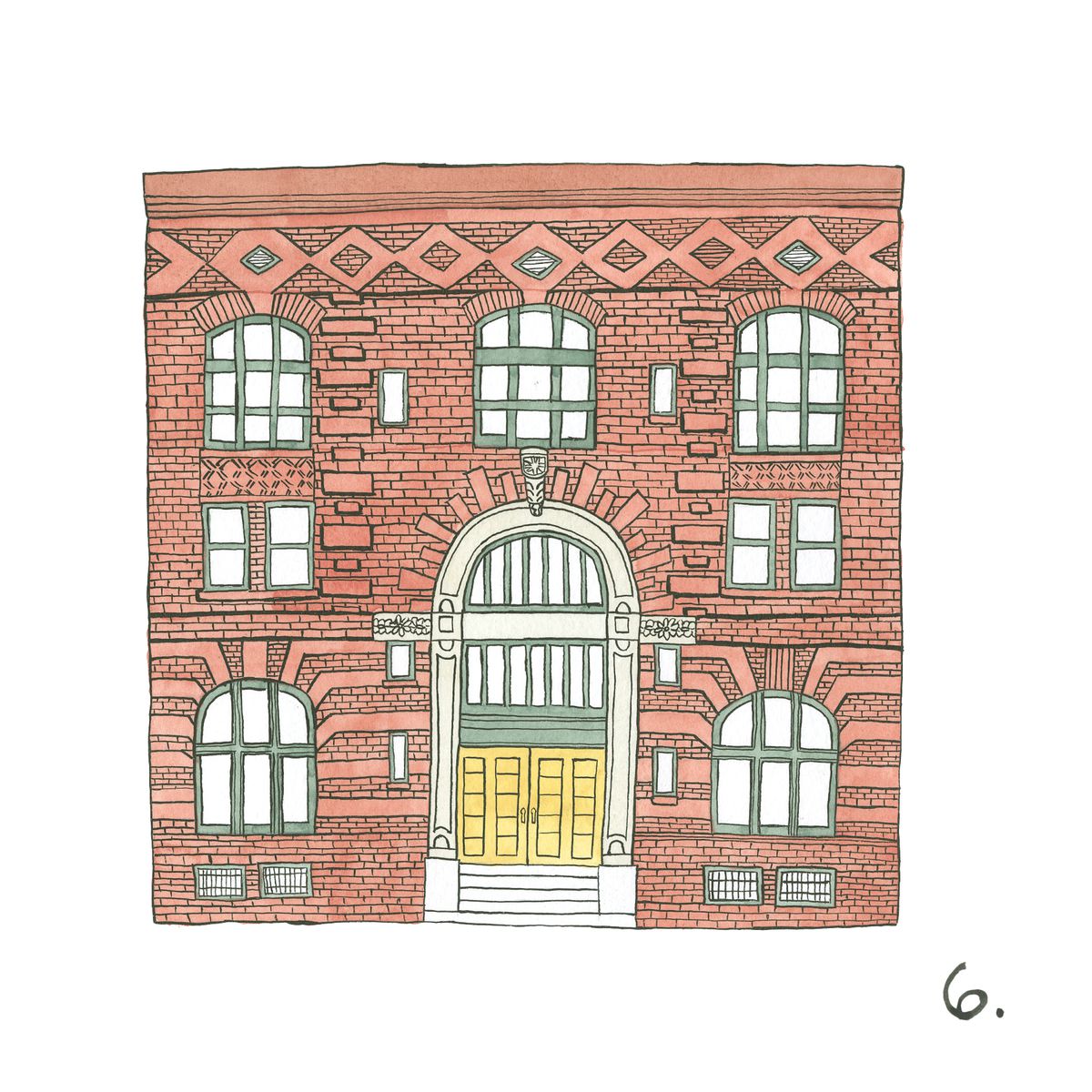
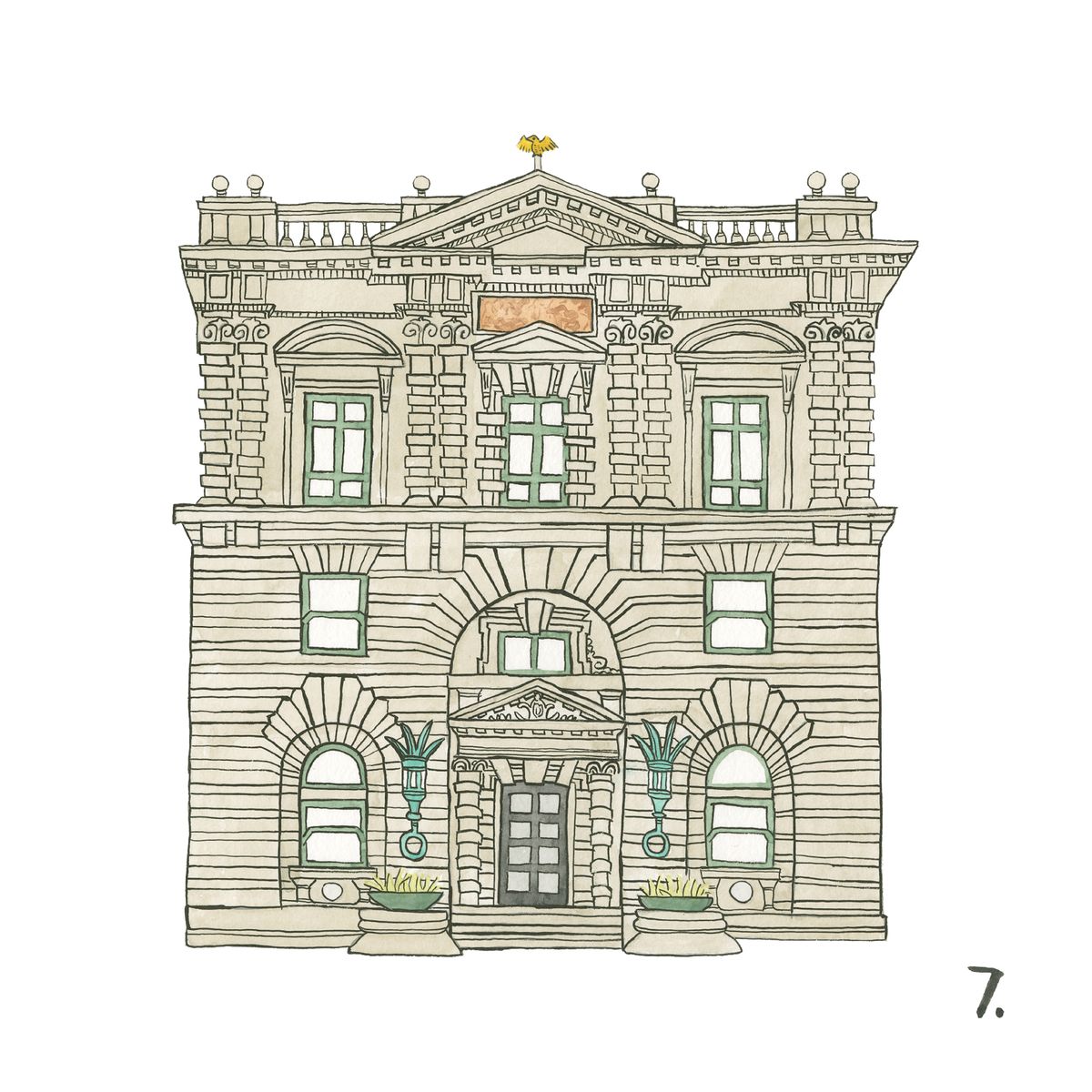
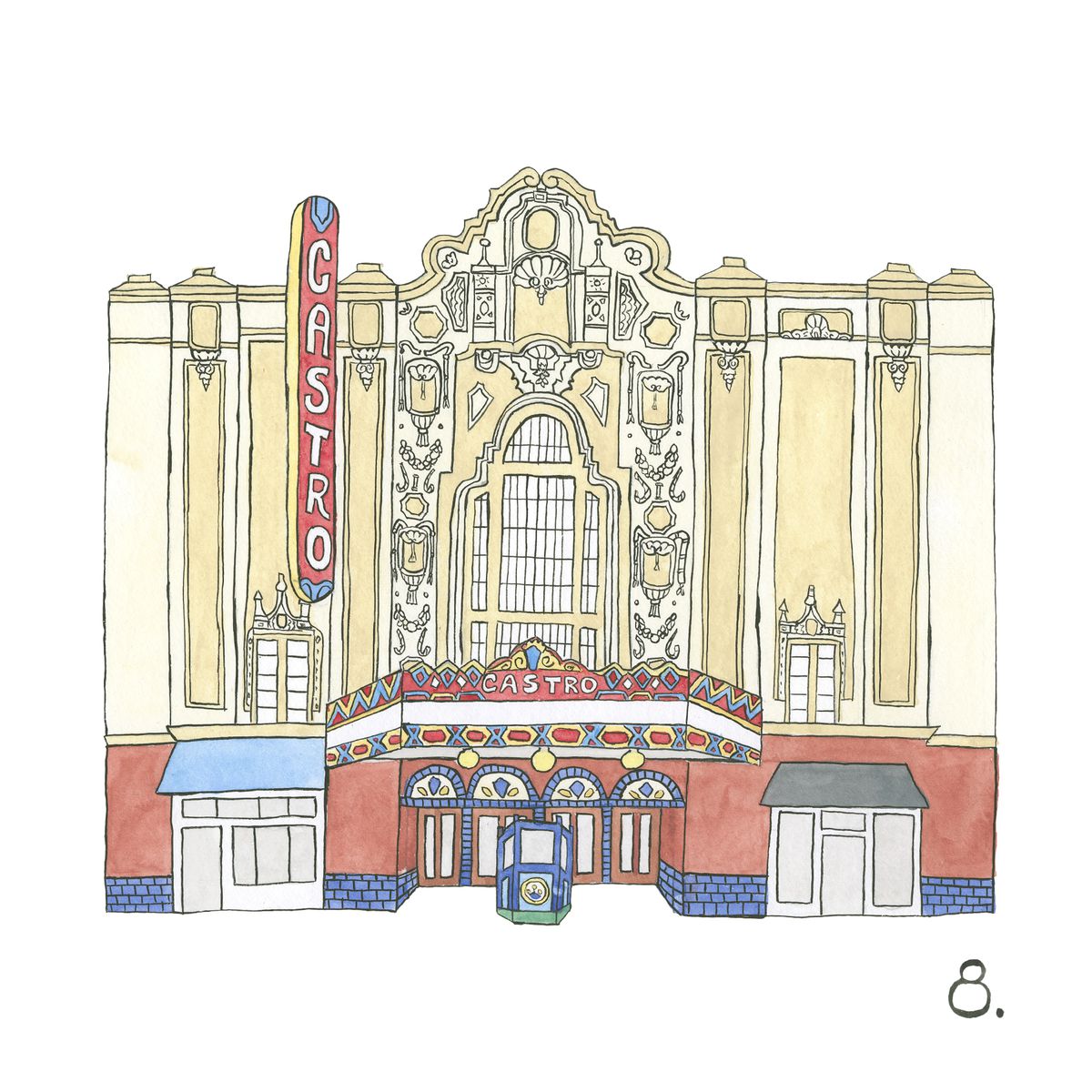
5. Earthquake Shacks
These extremely modest cottages were built by the city as emergency housing after the 1906 earthquake. With cedar-shingled roofs and redwood-plank walls, they were packed into tight rows and painted dark green to help them blend into parks and squares. When the temporary refugee camps closed, the inhabitants moved the shacks to private lots across the city. Out of approximately 5,300 tiny cottages, only a few still remain (two are on display at the Presidio). When they’ve come on the market in recent years, the exorbitant amounts of money they’ve fetched serve to underscore the ridiculousness of the San Francisco housing market.
6. Brick Warehouses
San Francisco’s early days as a port and industrial center are recorded in its brick warehouses. The earliest are from Gold Rush era; for instance, the Trinidad Bean and Elevator Company building, near the Embarcadero, dates to 1855. And having an office with exposed brick walls in a refurbished warehouse in SoMa has been a status symbol for tech companies since the first dot-com boom in the 1990s.
7. Beaux-Arts
With its grand gilded dome, San Francisco’s City Hall is characteristic of this Paris school of architecture, which was responsible for educating many U.S. architects in the 19th century before the development of American schools. Inspired by classical Greek and Roman architecture, Beaux-Arts buildings pull out all the stops: Enjoy the sweeping arches and columns of buildings such as the Palace of Fine Arts, the U.S. Court of Appeals for the Ninth Circuit, the Ferry Building, and the Hibernia Bank.
8. Mission Revival
Feeding into a romanticized vision of early California, Mission Revival is among various Spanish-flavored revivals that started to gain a wide following in the early 1900s. At the Presidio, a historic military base that occupies the city’s northern edge, a barracks at Fort Scott has the rounded bell gables, red tile roofs, flat stucco walls, and long arcade of Mission Revival. Architects also opted to work in the more elaborate Spanish Colonial Revival or Mediterranean Revival styles to create some of the city’s fanciest homes. This style can also be found at the Castro Theatre, one of Timothy Pfleuger’s most popular buildings.
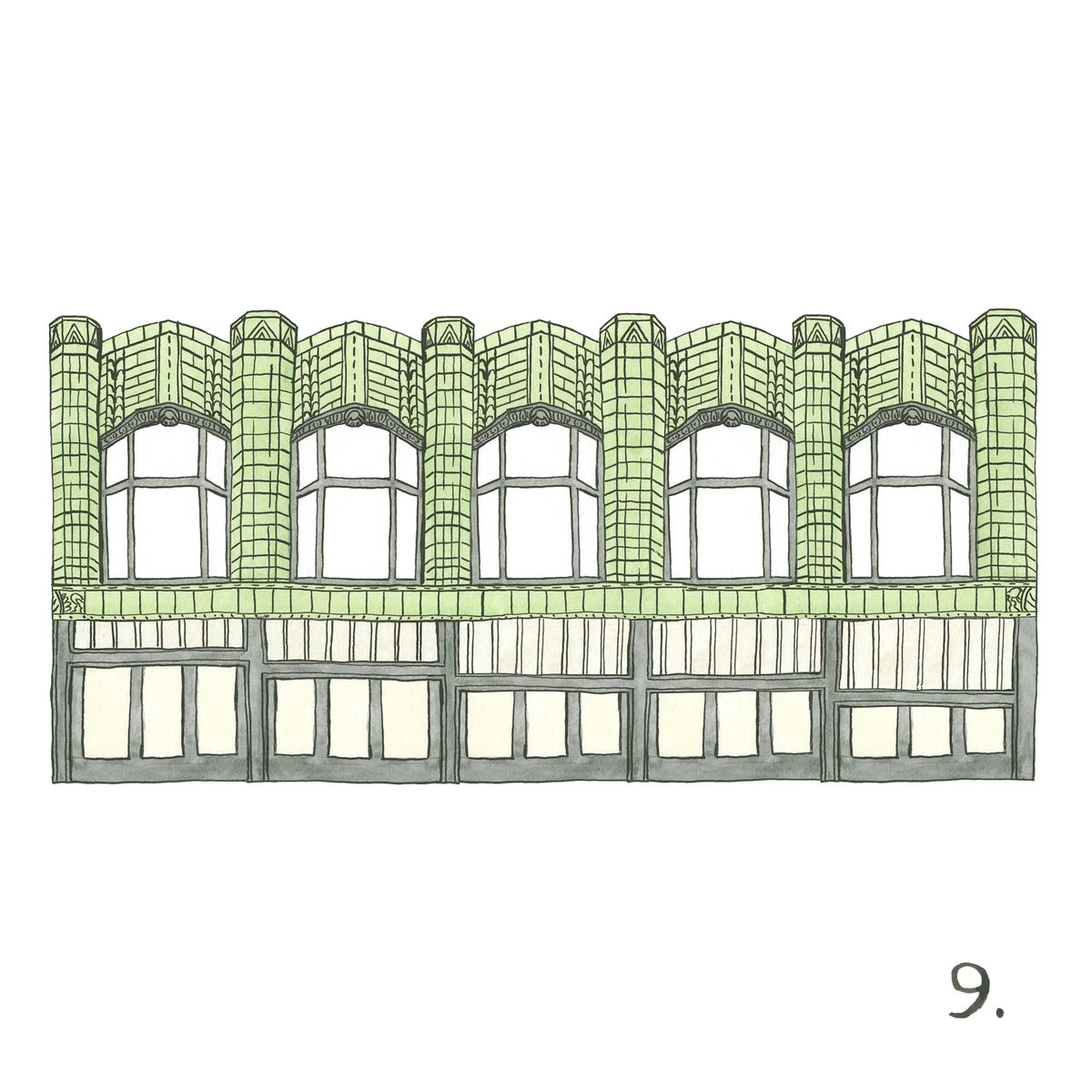
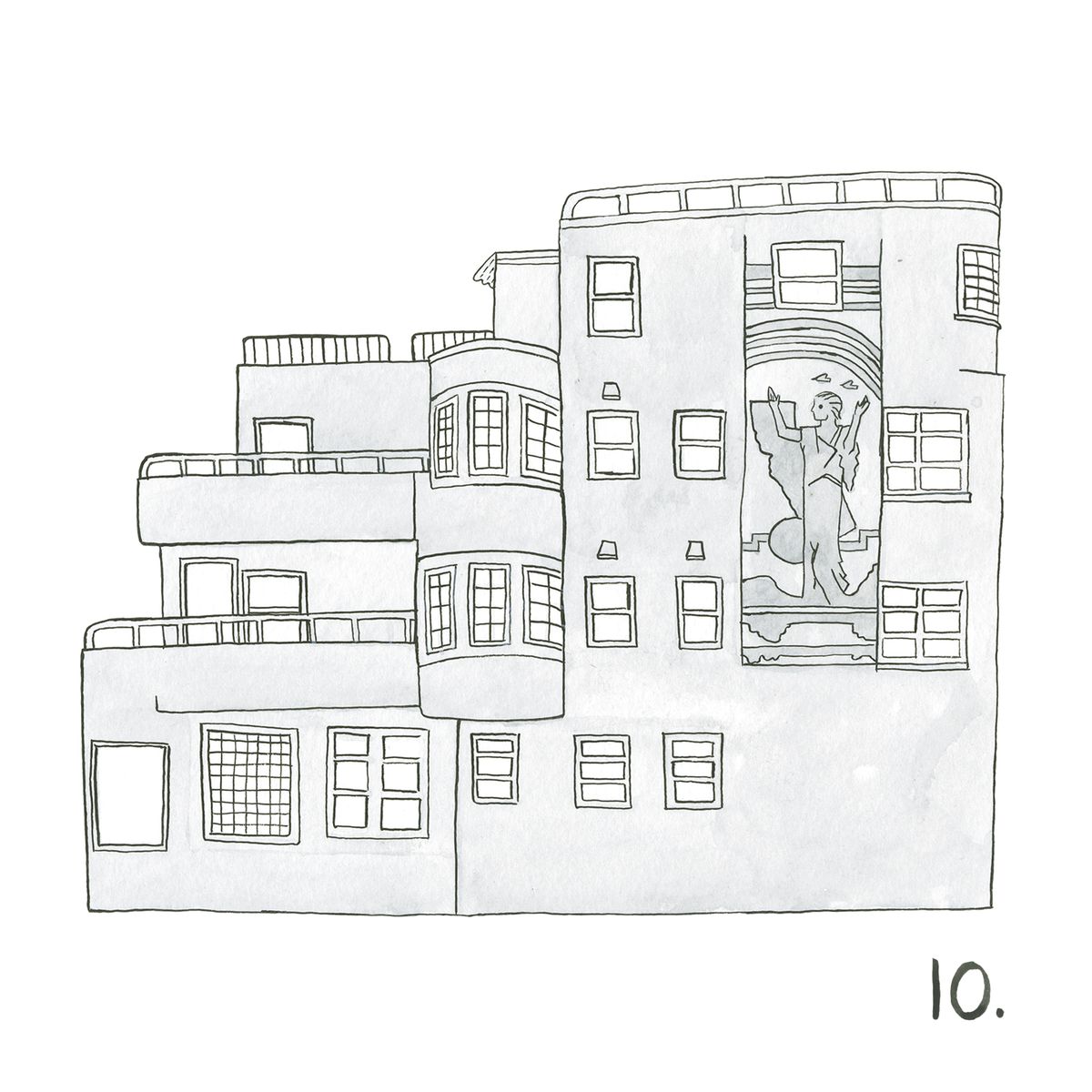
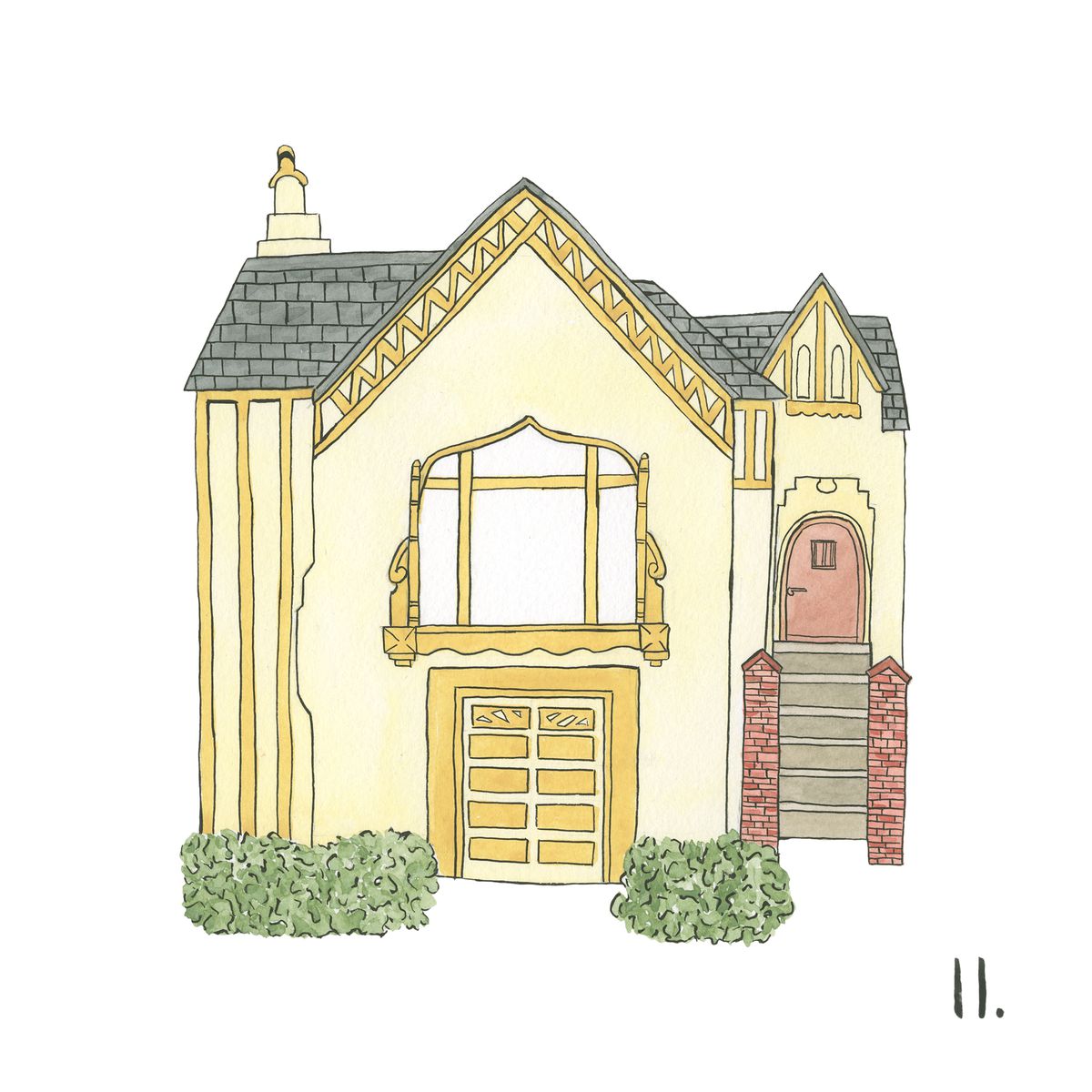
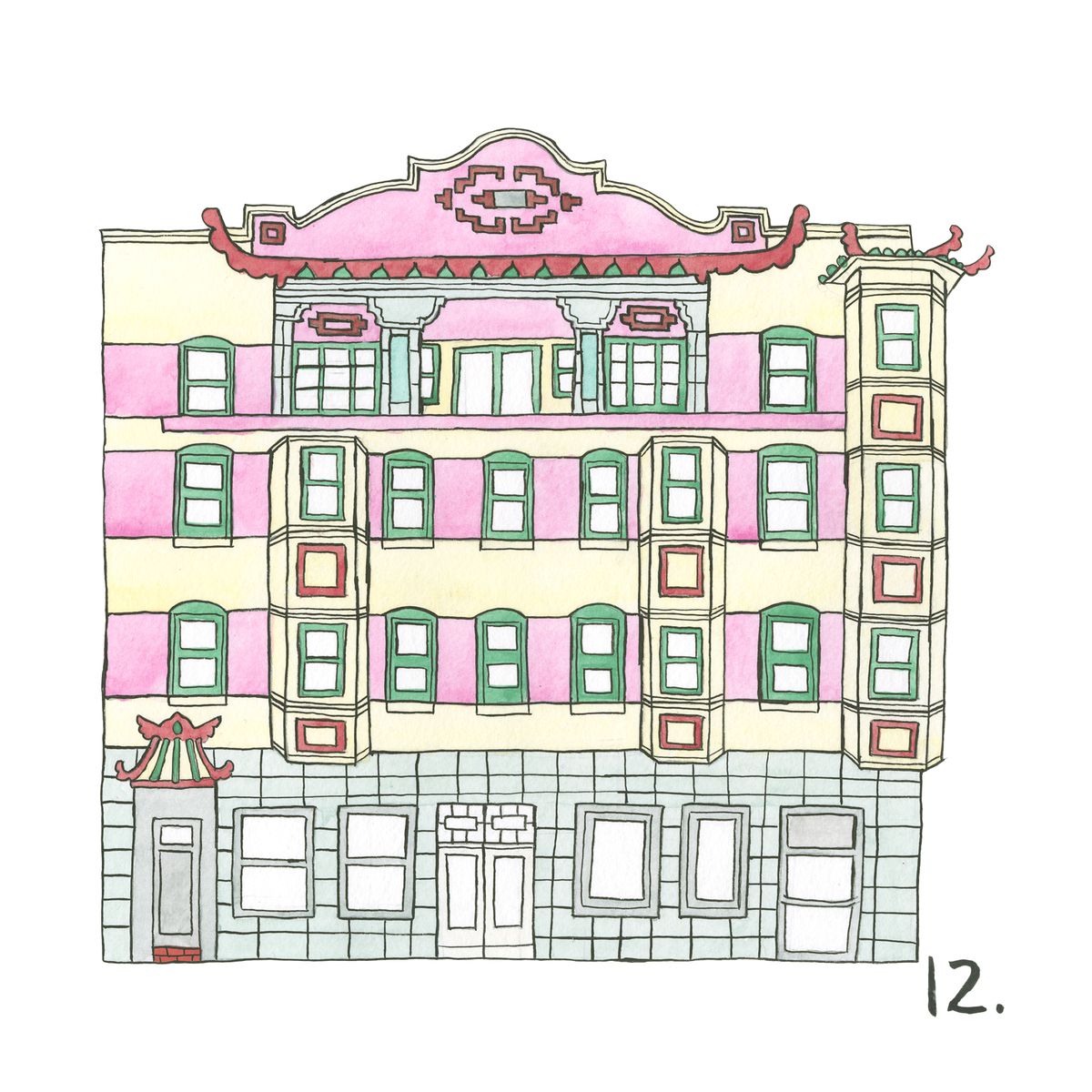
9. Art Deco
This pleasing combination of modern lines and stylized decoration from the 1920s only had a few practitioners in San Francisco. But the city does have a lovingly renovated Art Deco movie palace (the New Mission Theatre cum Alamo Drafthouse), a former restaurant at 200 Powell with a rhythmic parapet and green terra-cotta cladding, the Eng-Skell warehouse in SoMa, and a residence at 99 Ord with lavishly embellished bay windows.
10. Streamline Moderne
Emerging from Art Deco in the 1930s, Streamline Moderne buildings borrow their sleek curves from the drag-reducing forms of trains, boats, planes, and cars. They are relatively rare in San Francisco, but the most prominent examples are the Malloch Building in Telegraph Hill and the Maritime Museum, a former WPA bathhouse built in 1939. Modeled on an ocean liner and complete with porthole windows, the long white Maritime Museum could have been purpose-built to become a shipping museum. From 1940, the Rincon Annex post office in the East Cut is more low-key, but has some nice details, including stone friezes of dolphins.
11. Rousseau “Storybook” Homes
In the 1930s, San Francisco architect and developer Oliver Rousseau enlivened the Sunset District by building homes that referenced a range of European archetypes, including Bavarian castles, French Second Empire townhouses, and Spanish villas. The kitschy charm of these modestly priced and proportioned homes caught on with middle-class buyers, and inspired others to follow suit; today, they are all dubbed “Rousseau” houses.
12. Chinatown
As the main port of entry for Chinese immigrants starting in the 1840s, San Francisco has the oldest Chinatown in the United States. After it was destroyed in the 1906 earthquake, the Chinese community commissioned Western architects to build a neighborhood with overt elements like curved tile roofs order to attract tourists—resulting in interesting amalgamations like the pagoda-topped Sing Chong Building, designed by the architectural team of Ross and Burgren.
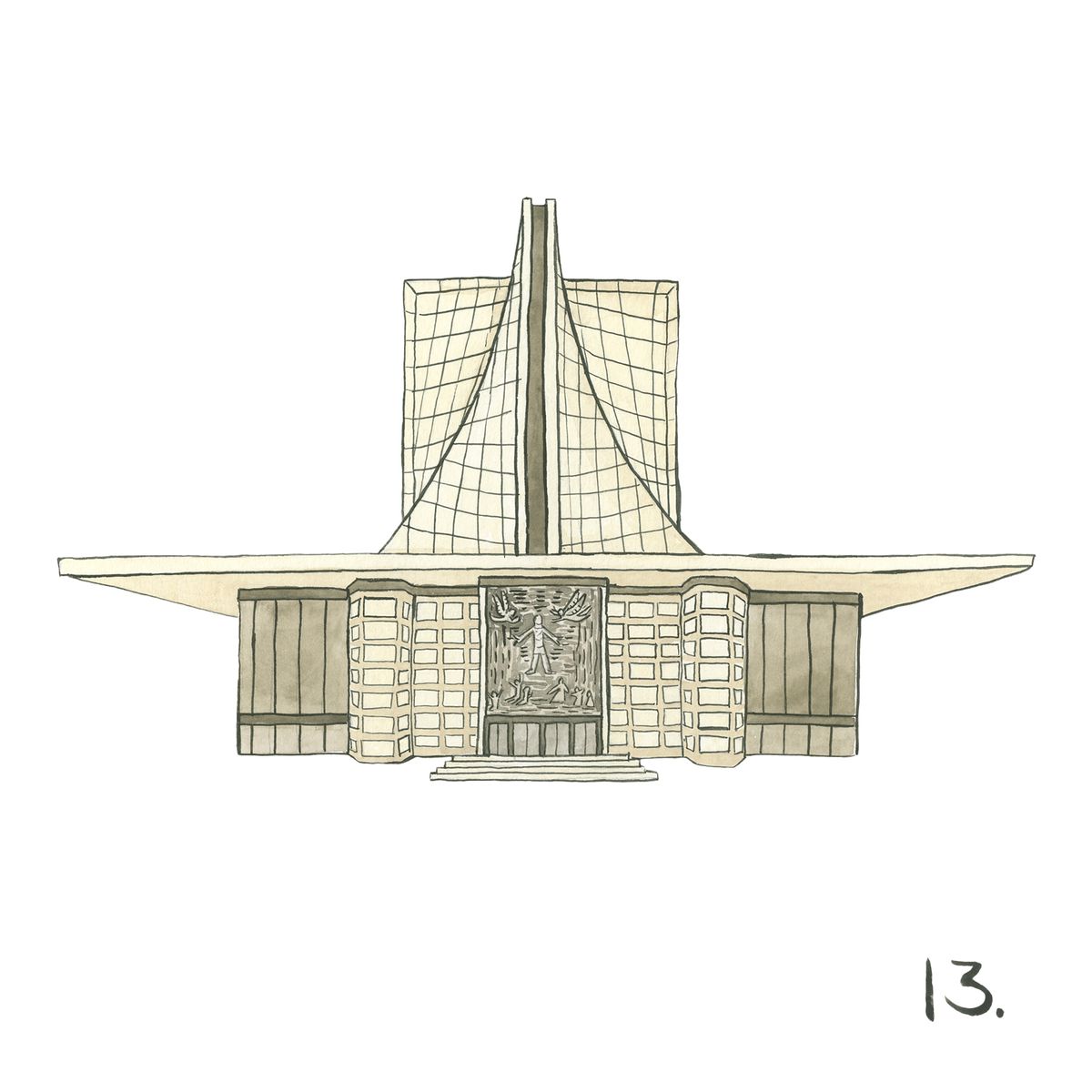
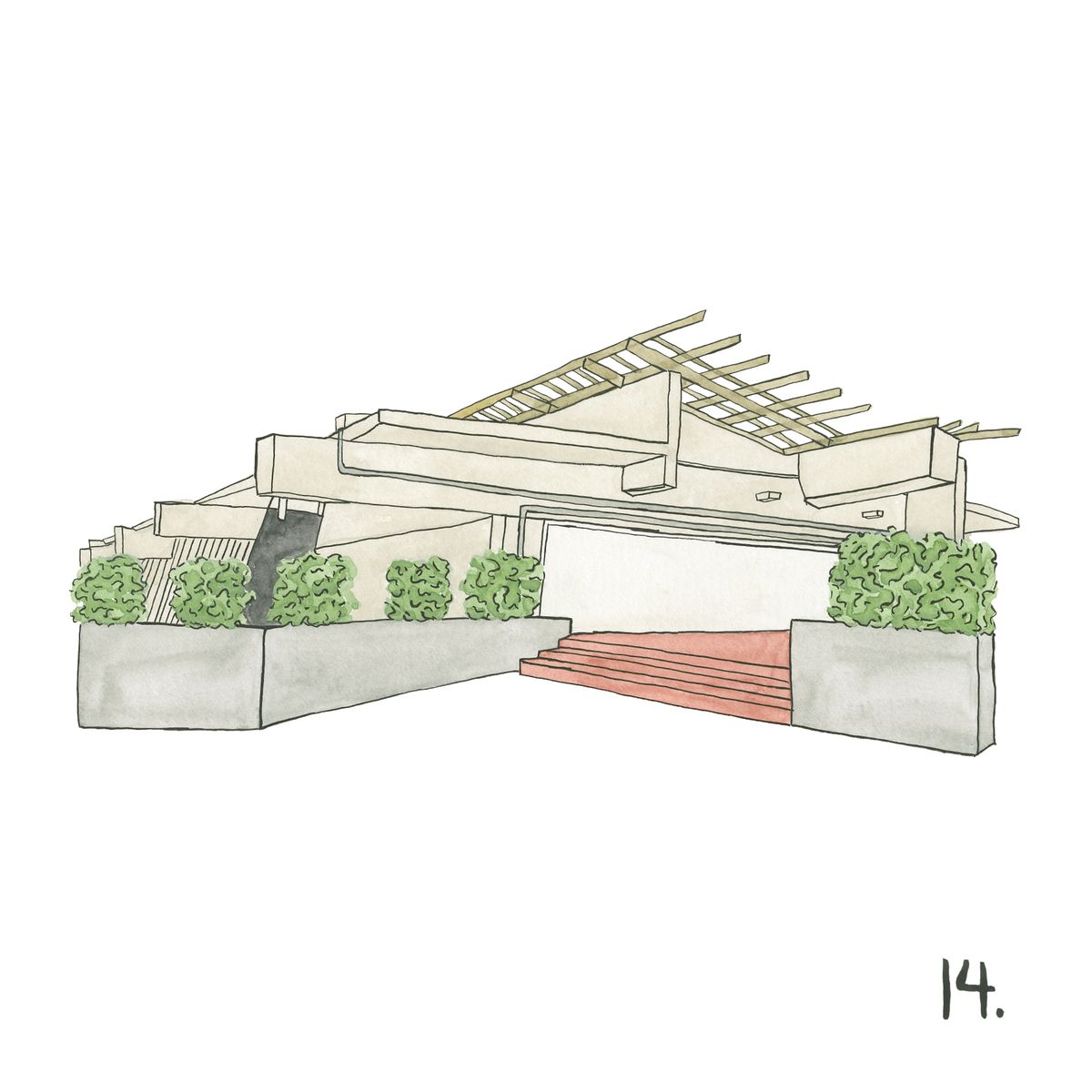
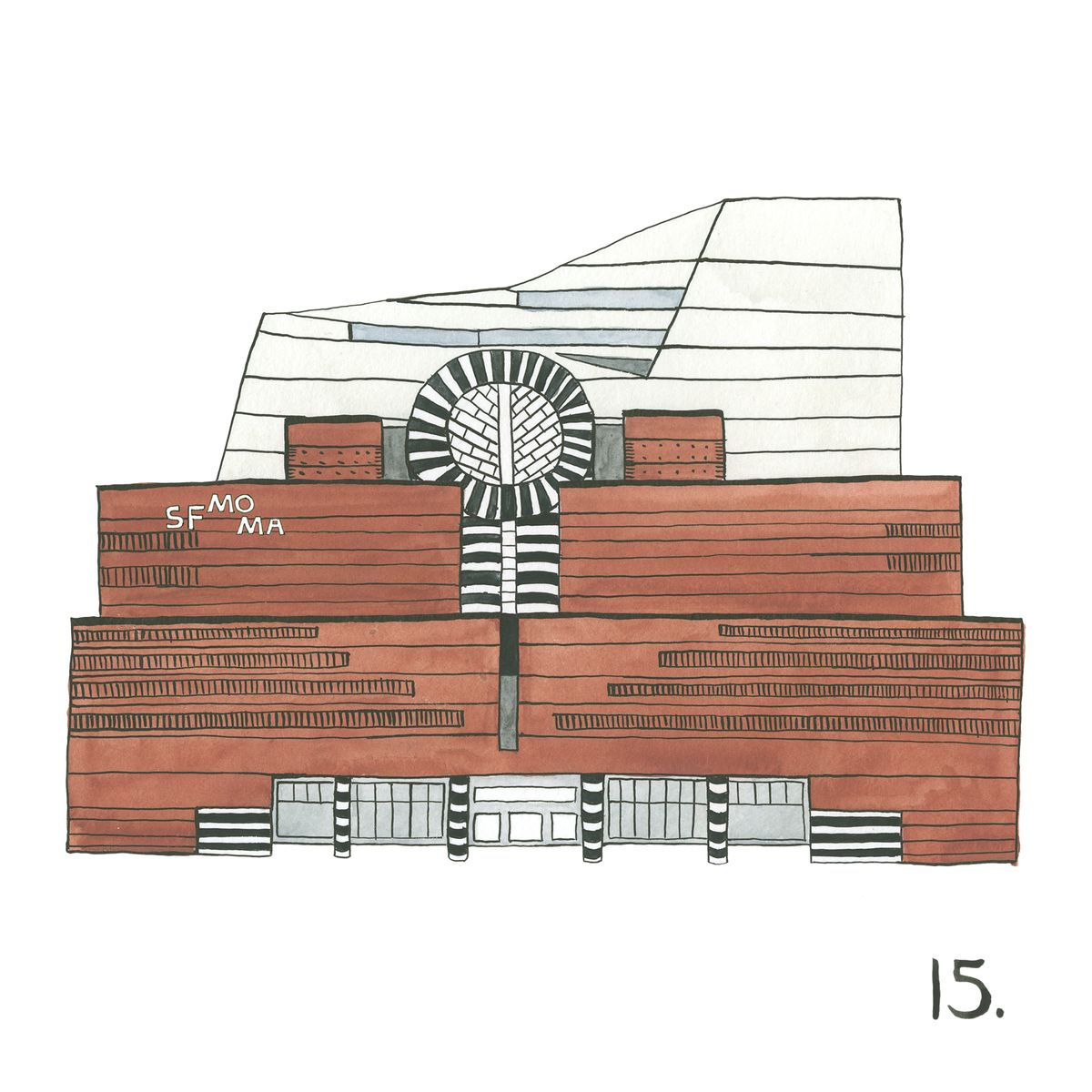
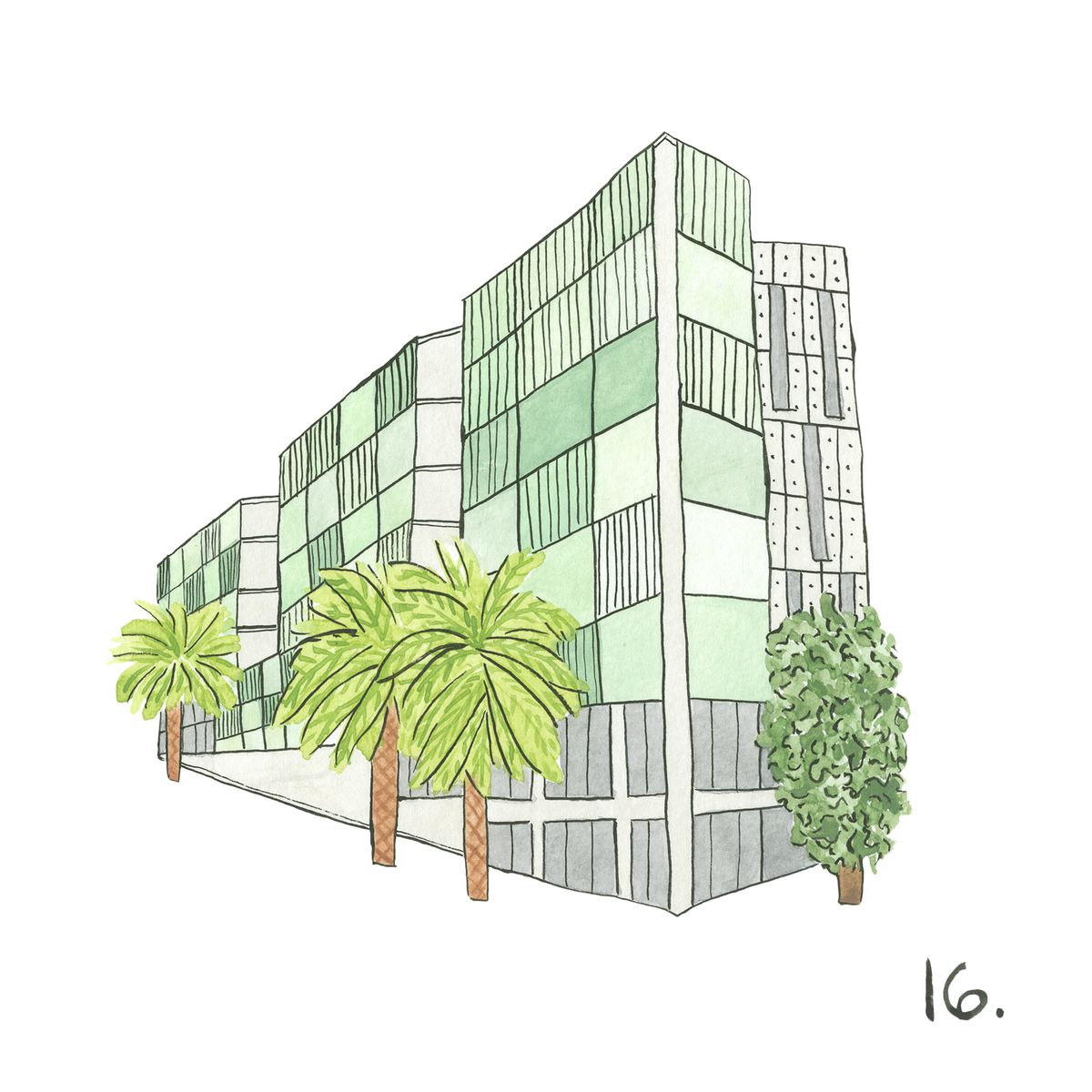
13. Modernist
The International Style (aka minimalism) appeared in San Francisco in the 1960s via buildings like SOM’s Alcoa Building, with its strong external grid of seismic bracing, and the pure white curves of St. Mary’s Cathedral. In residential design, Eichlers were a modernist response to the need for post-WWII tract housing, emphasizing post-and-beam construction, indoor-outdoor relationships, and simple forms; in San Francisco, they can be found in Diamond Heights.
14. Brutalist
This architectural label, whose name comes from the French term for raw concrete, béton brut, originated as a way to highlight buildings that were particularly honest in conveying their use, structure, and material composition. Paffard Keatinge-Clay’s 1969 addition to the San Francisco Art Institute in Russian Hill is a good example, with studio spaces defined by structural concrete bays and a rugged roof deck. Another choice example: the Glen Park BART Station.
15. Postmodern
A counterattack to the uniformity of the International Style, postmodern architecture can literally be a mixed bag of classical and modern references, and the reception has been similarly mixed. But Mario Botta’s SFMOMA, with its brick rectangles surrounding a round black-and-white striped turret, definitely stands out from the crowd. The city also has 580 California, a high-rise by famed postmodern architect Philip Johnson, which has a glass mansard roof ringed with 12-foot-tall faceless statues.
16. Contemporary
The advent of computer modeling has allowed architects to generate buildings with decidedly irregular structures, exploring jagged, tilting angles and organic curves. In 2005, Herzog and de Meuron’s de Young Museum, which has a torqued tower and perforated copper facade, heralded the next generation of architectural creativity in San Francisco. Renzo Piano’s remodel of California Academy of Sciences and Snohetta’s bulging addition to SFMOMA and Stanley Saitowitz’s 8 Octavia are more recent additions.
Source
